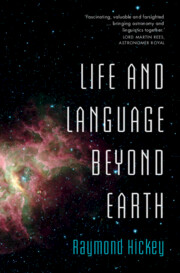Book contents
- Life and Language Beyond Earth
- Reviews
- Life and Language Beyond Earth
- Copyright page
- Contents
- Tables and Figures
- Preface
- How to Use This Book
- Part I Introduction
- Part II The Universe We Live In
- 4 Trying to Grasp Size
- 5 Star Formation and Planets
- 6 The Likelihood of Life
- 7 Possible Conditions on an Exoplanet
- 8 How and Where to Look for Exolife
- 9 The Limits of Exploration
- 10 Assessing Probabilities
- Part III Our Story on Earth
- Part IV The Runaway Brain
- Part V Language, Our Greatest Gift
- Part VI Life and Language, Here and Beyond
- Book part
- Glossary
- Timelines
- Figure credits
- References
- Bibliography
- Index
8 - How and Where to Look for Exolife
from Part II - The Universe We Live In
Published online by Cambridge University Press: 16 September 2023
- Life and Language Beyond Earth
- Reviews
- Life and Language Beyond Earth
- Copyright page
- Contents
- Tables and Figures
- Preface
- How to Use This Book
- Part I Introduction
- Part II The Universe We Live In
- 4 Trying to Grasp Size
- 5 Star Formation and Planets
- 6 The Likelihood of Life
- 7 Possible Conditions on an Exoplanet
- 8 How and Where to Look for Exolife
- 9 The Limits of Exploration
- 10 Assessing Probabilities
- Part III Our Story on Earth
- Part IV The Runaway Brain
- Part V Language, Our Greatest Gift
- Part VI Life and Language, Here and Beyond
- Book part
- Glossary
- Timelines
- Figure credits
- References
- Bibliography
- Index
Summary
Consider that space exploration is not yet even 100 years old nor is digital technology, which is advancing at a breath-taking pace.1 Assuming that such technology will continue unabated and that there are no negative impacts from other quarters,2 we can further assume that the ability of humans to probe the universe with increasingly powerful instruments will continue to increase and allow us to discover ever more about the planets around other stars.
The great advances in astronomy in the past century or so were initially theoretical in that they rested on predictions about what the universe is like and how certain phenomena such as light would behave on scales much larger than those on Earth.
- Type
- Chapter
- Information
- Life and Language Beyond Earth , pp. 100 - 127Publisher: Cambridge University PressPrint publication year: 2023

